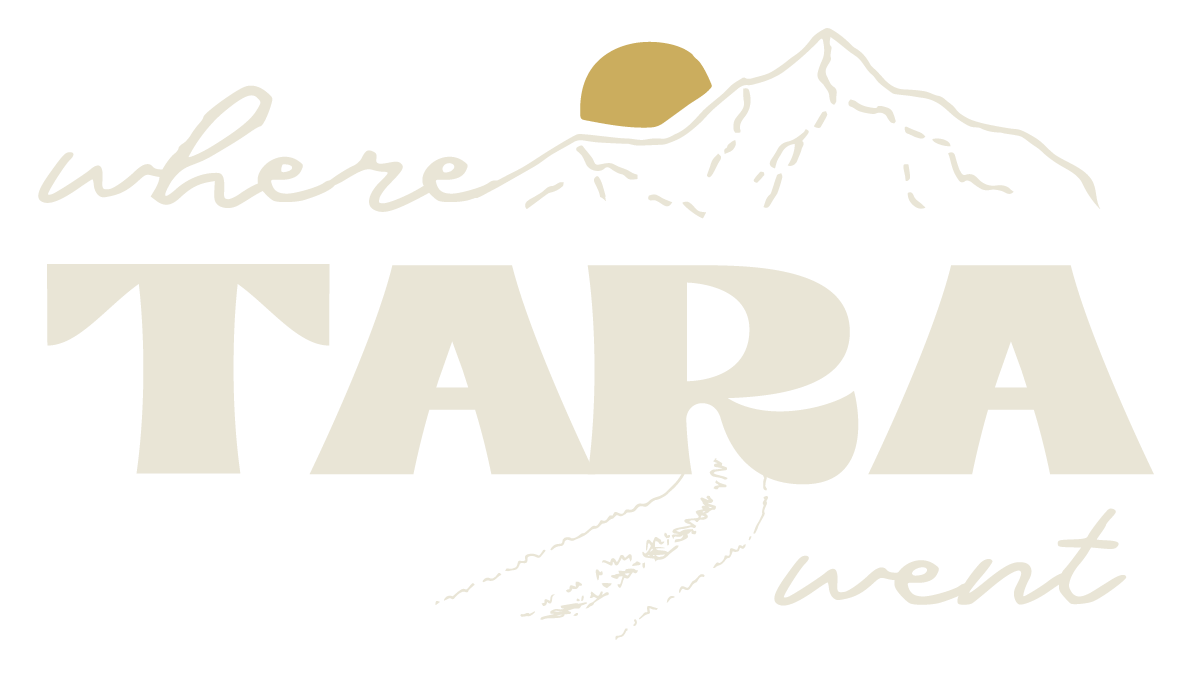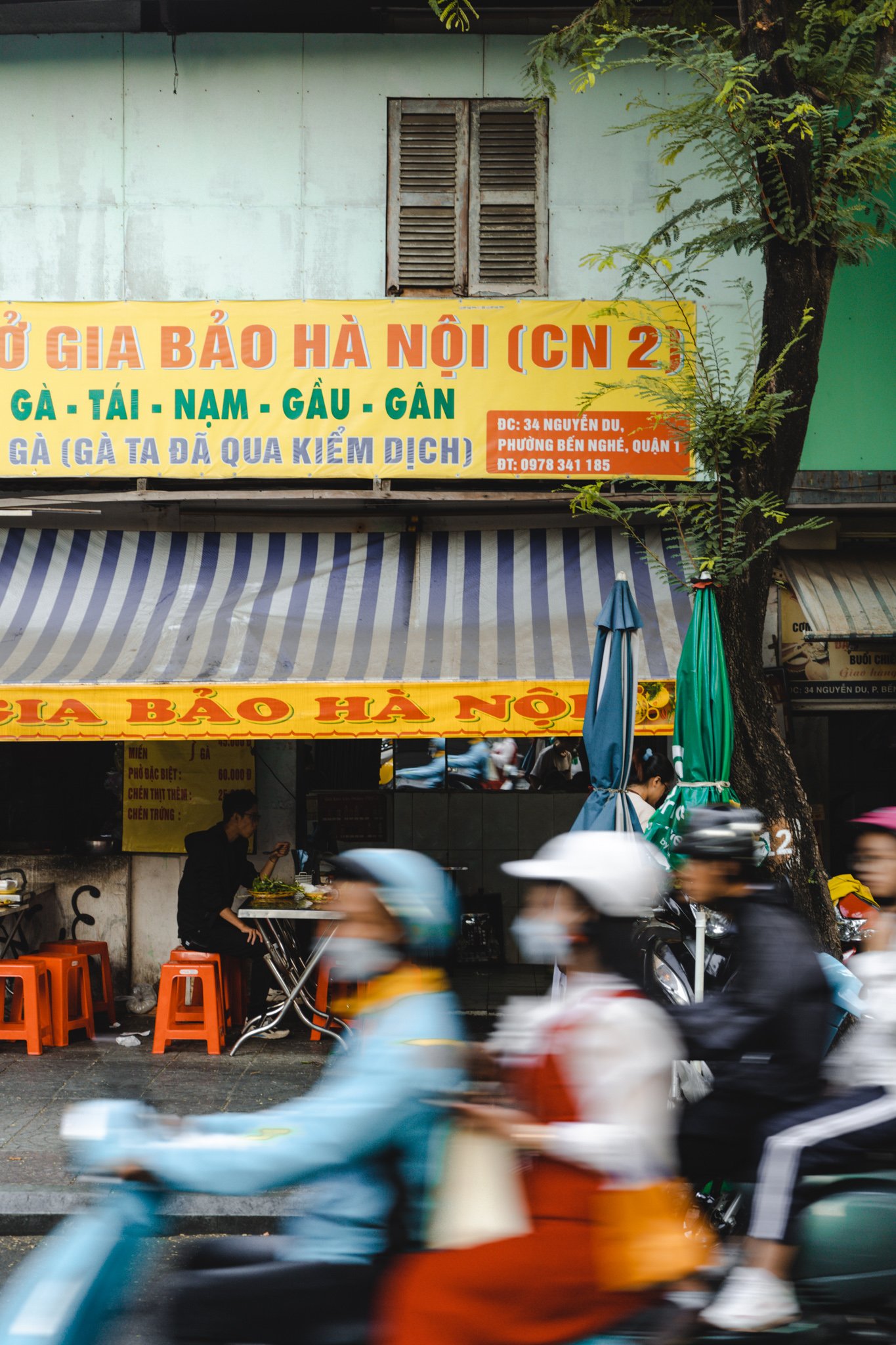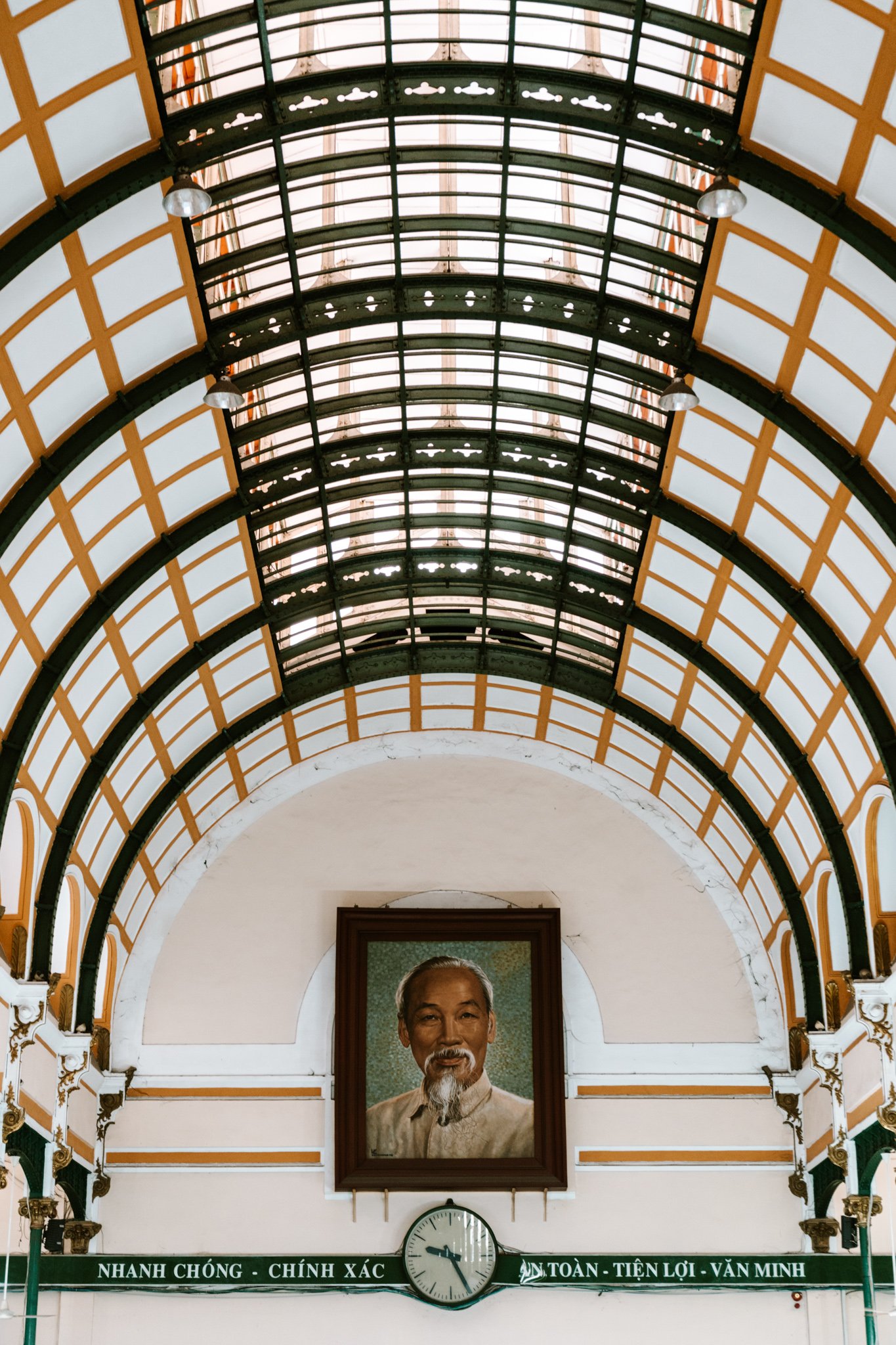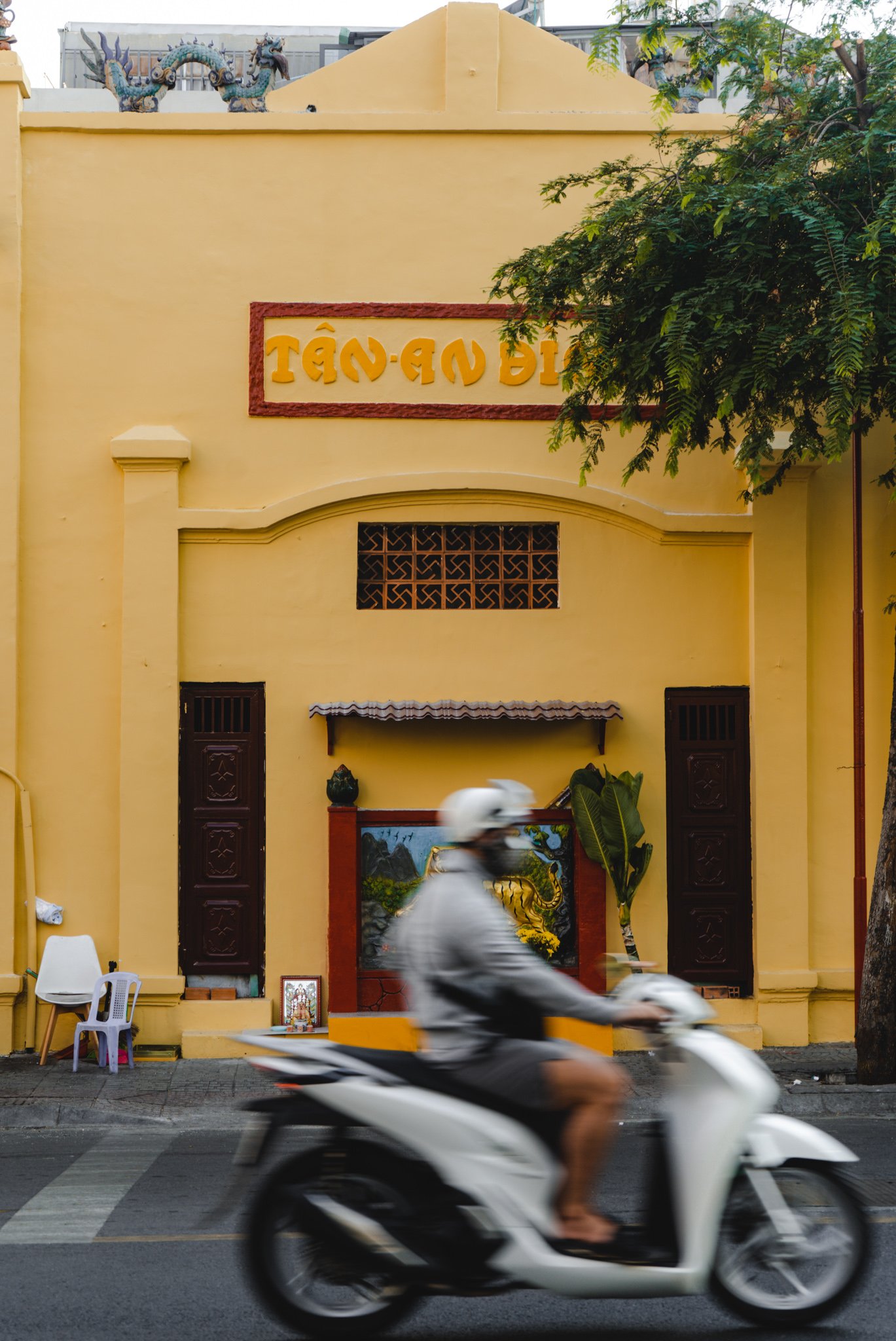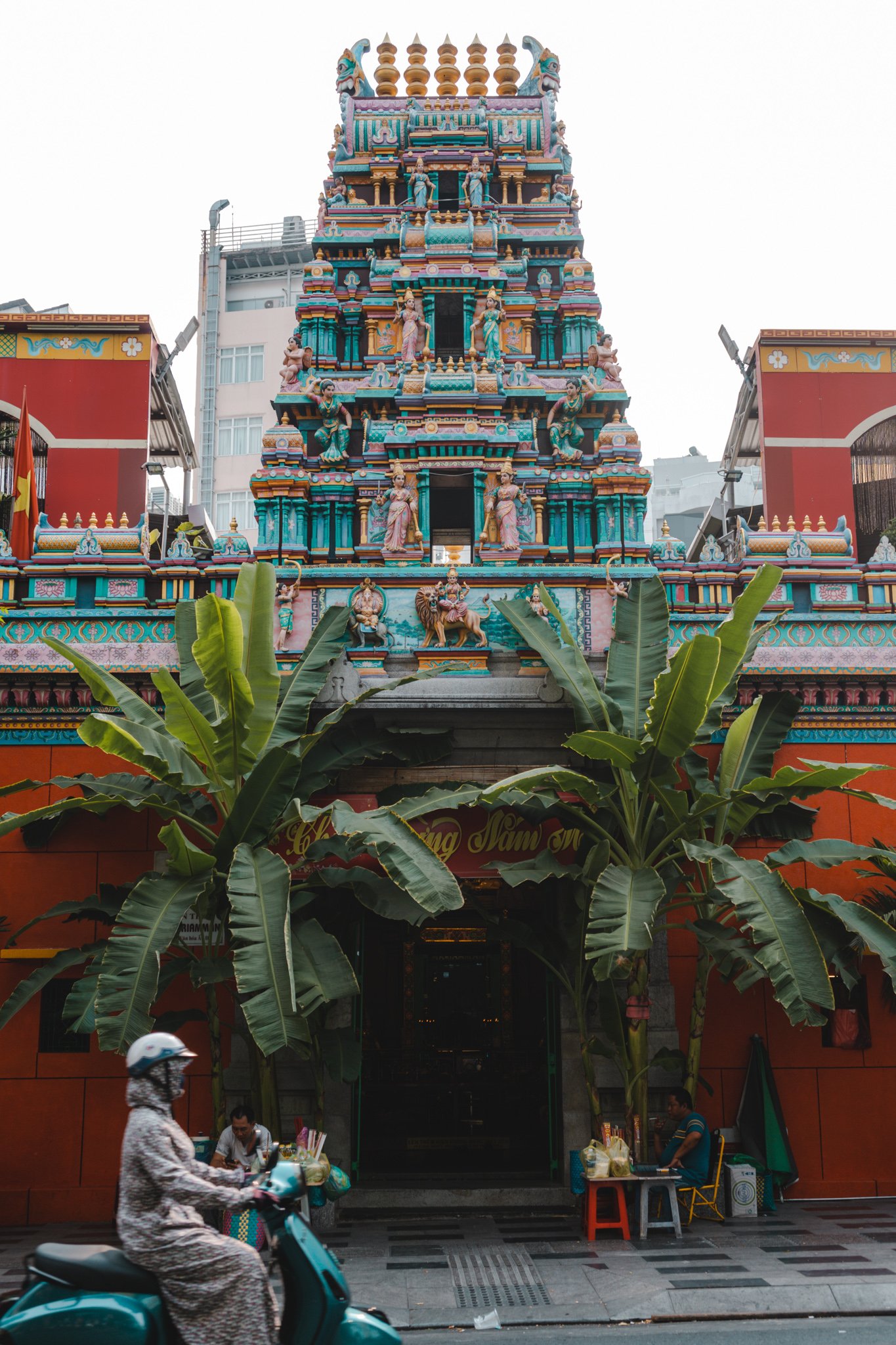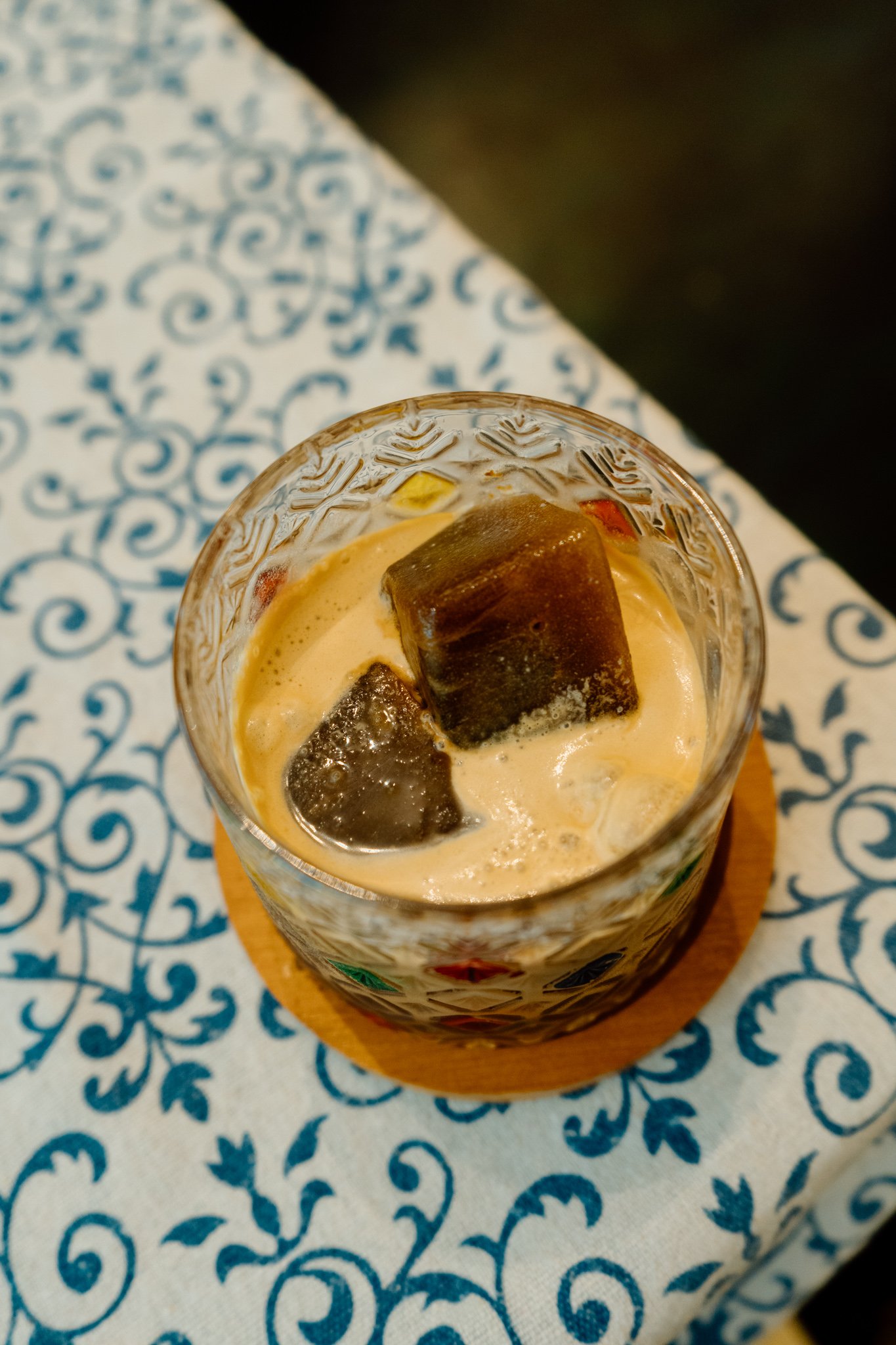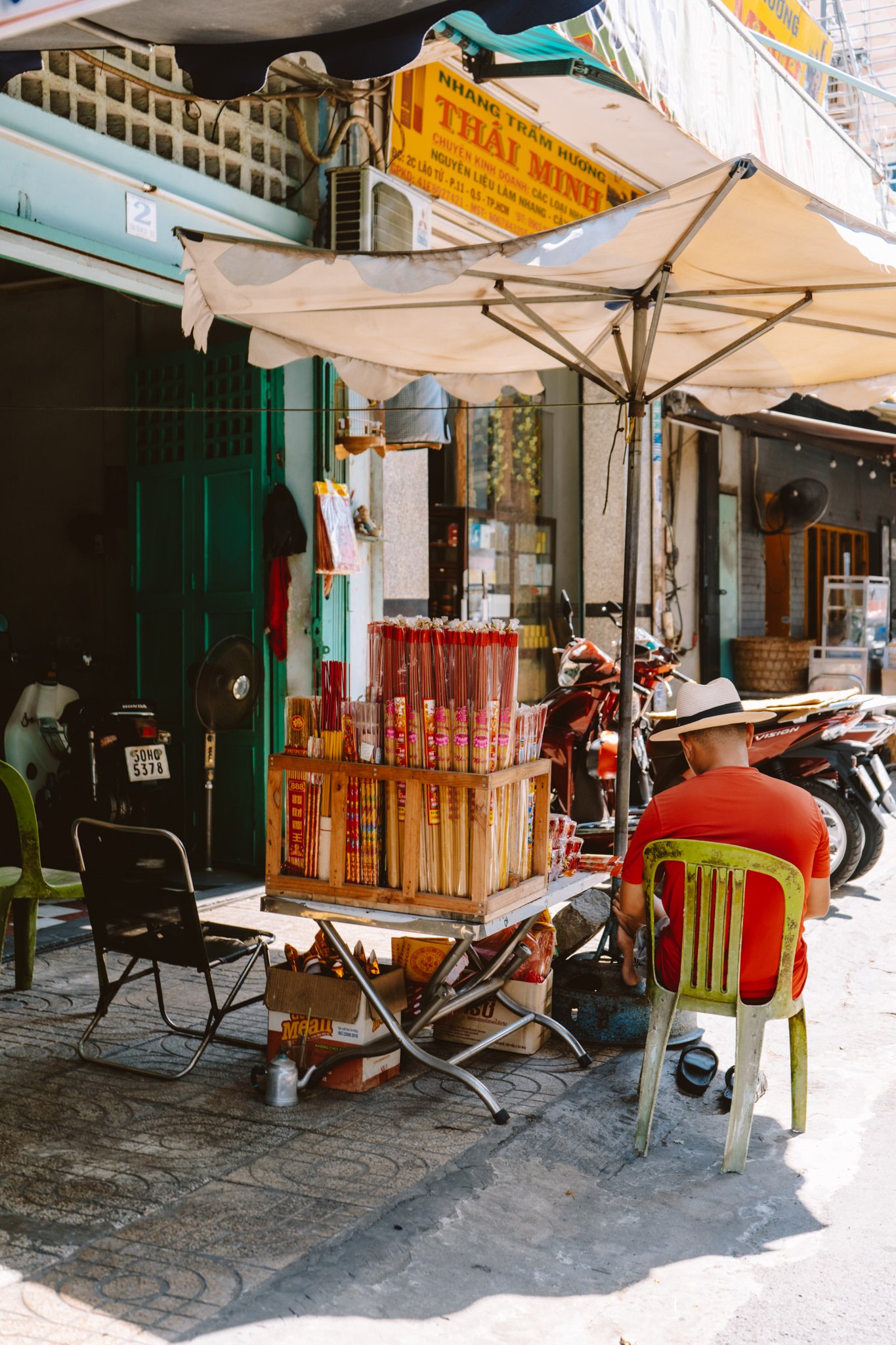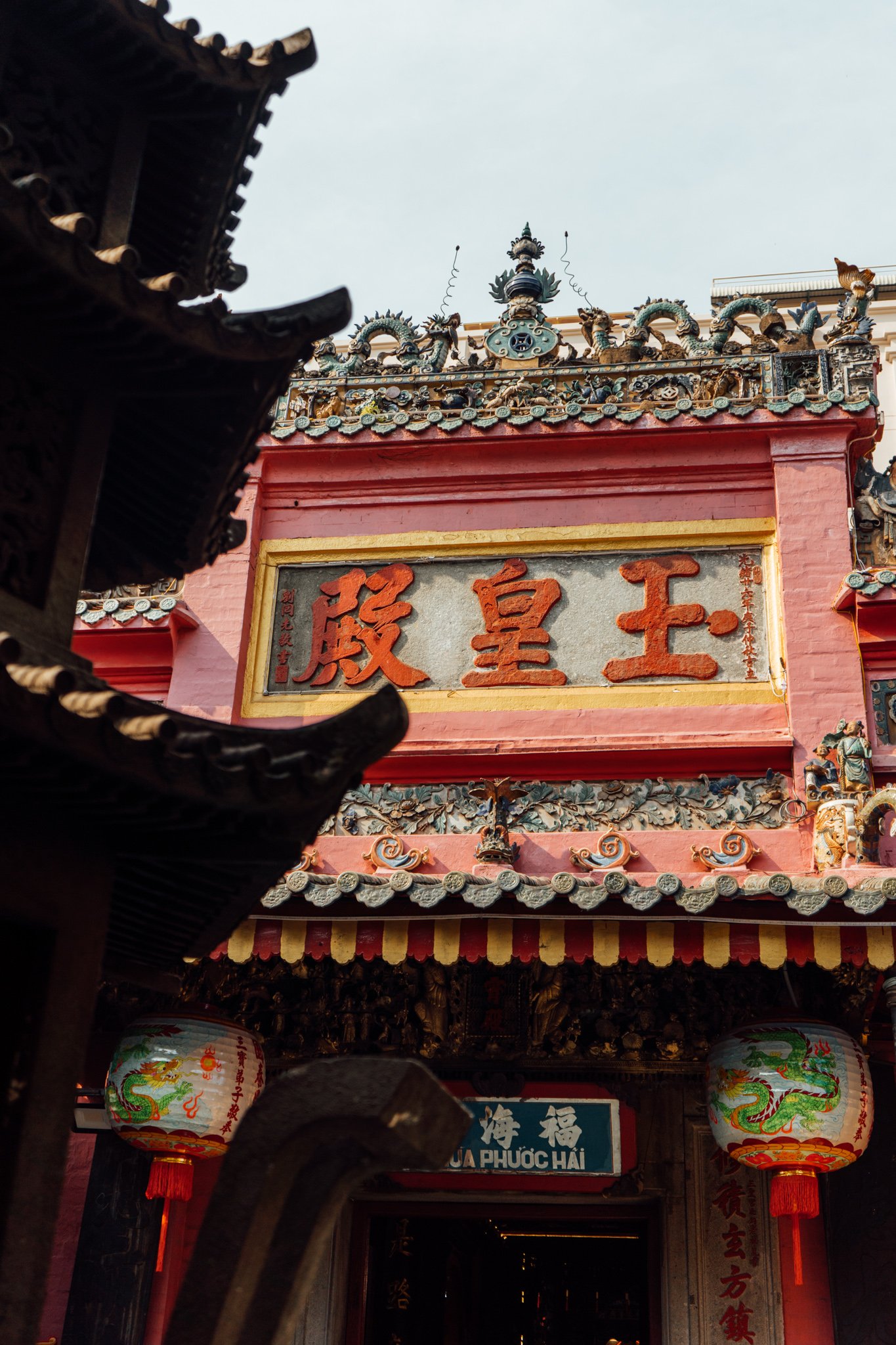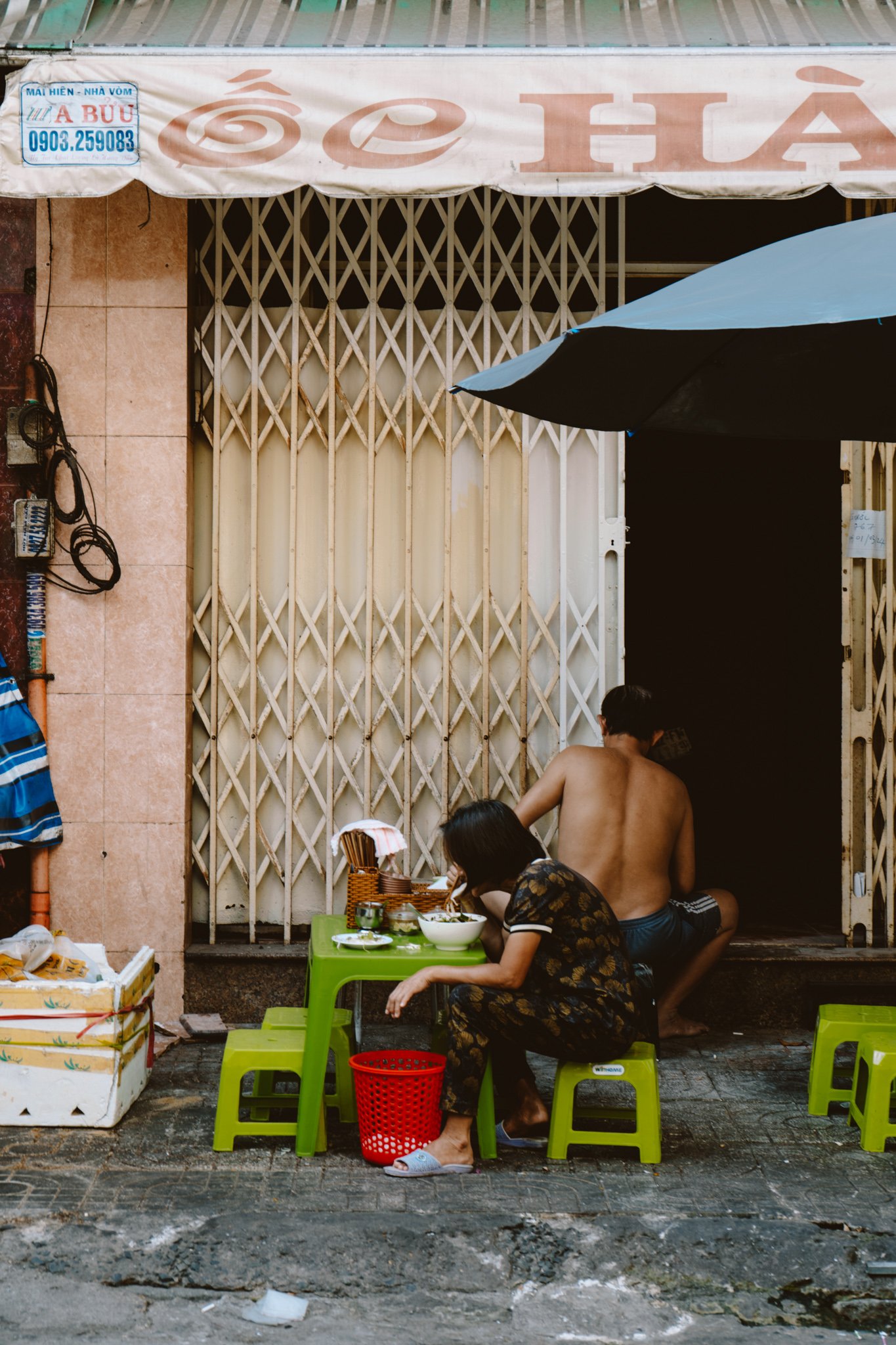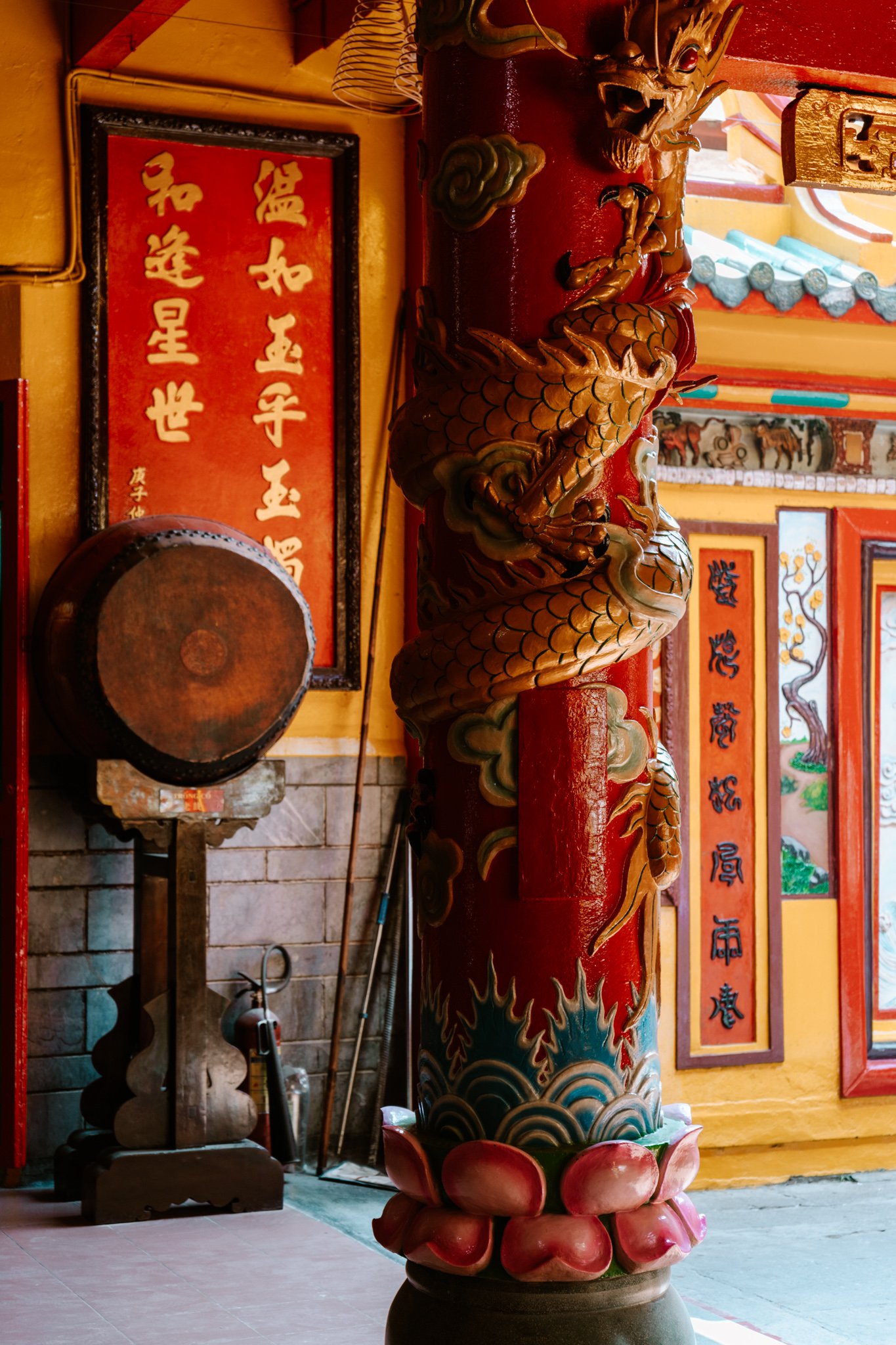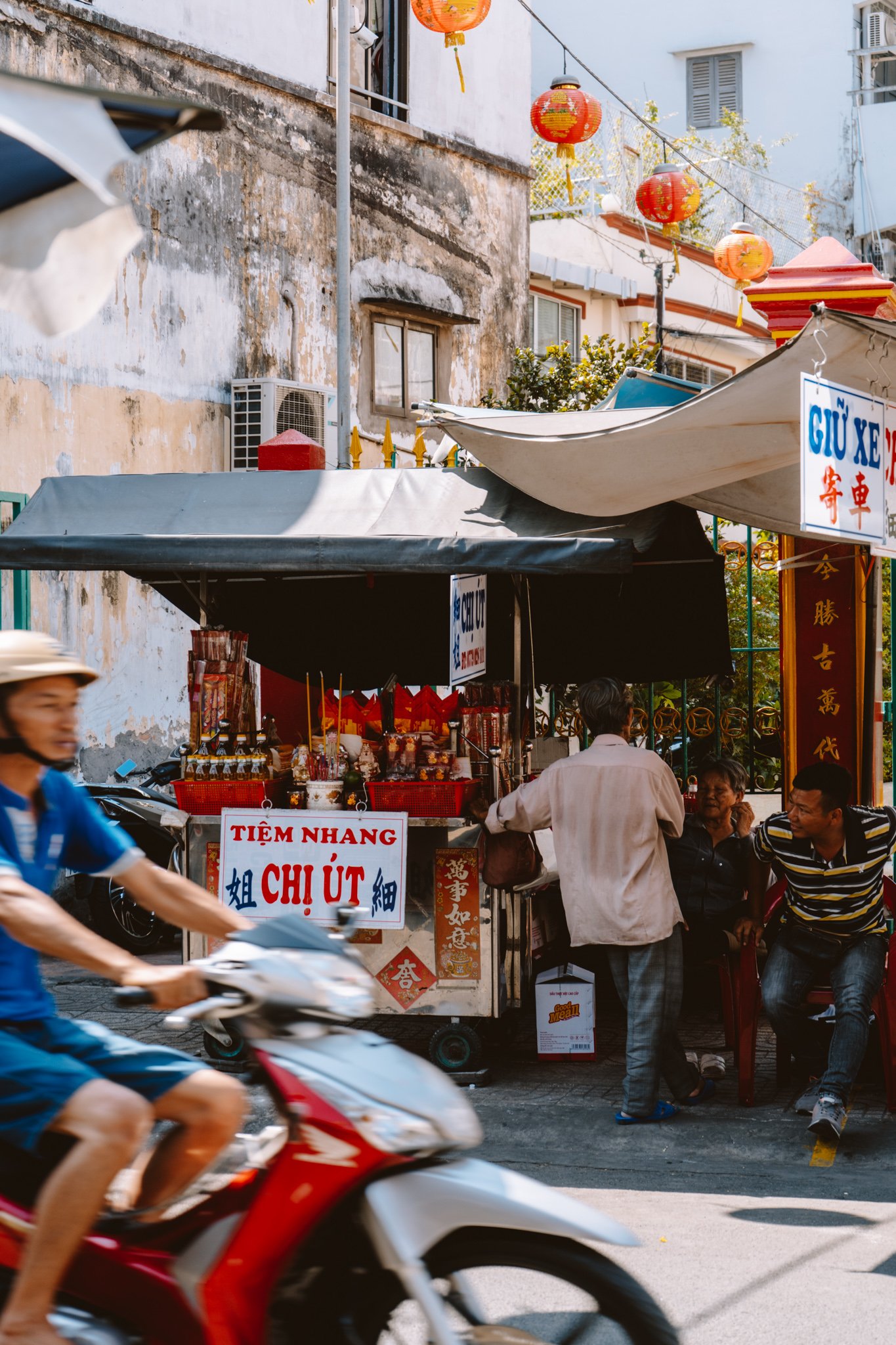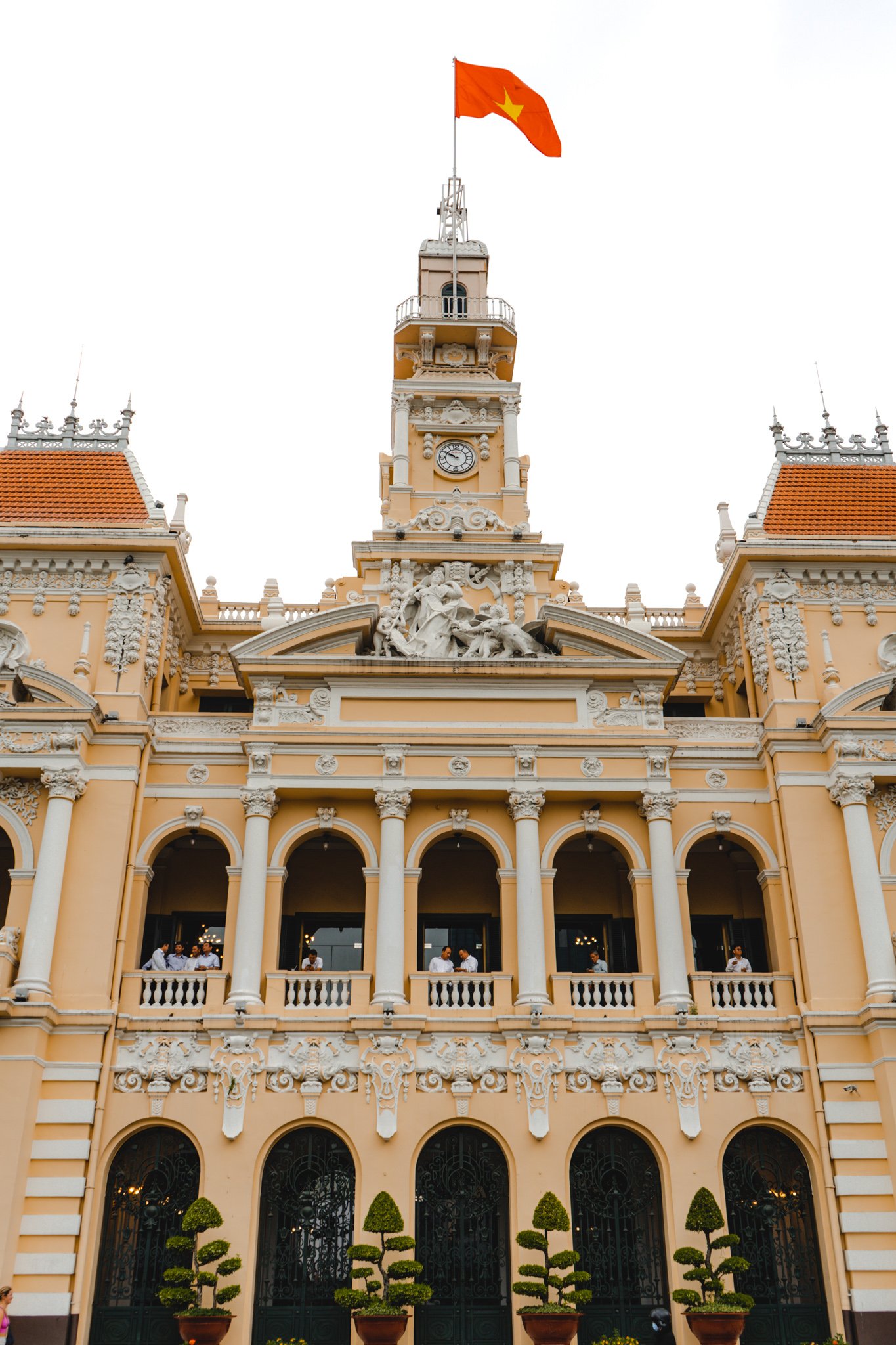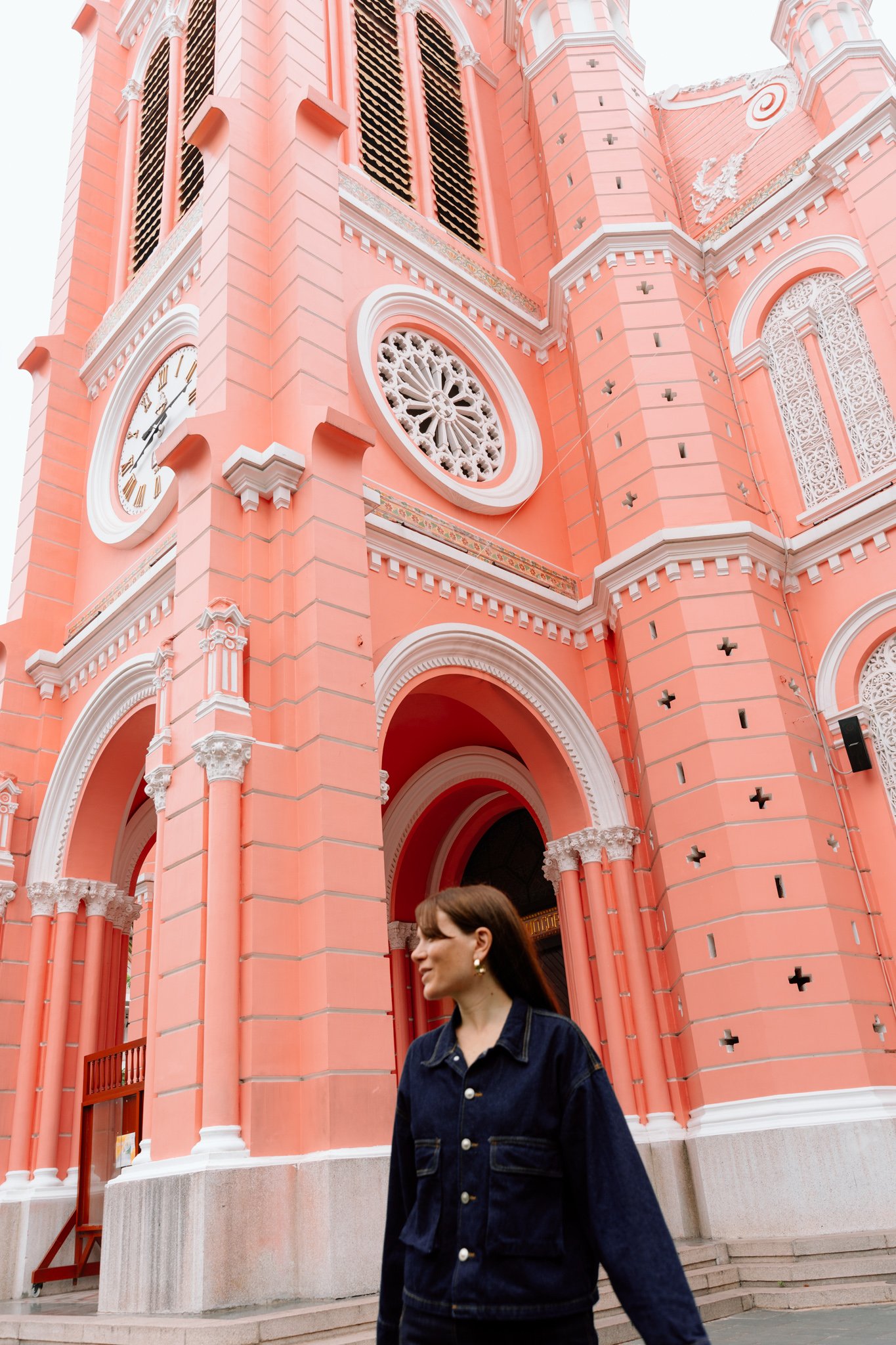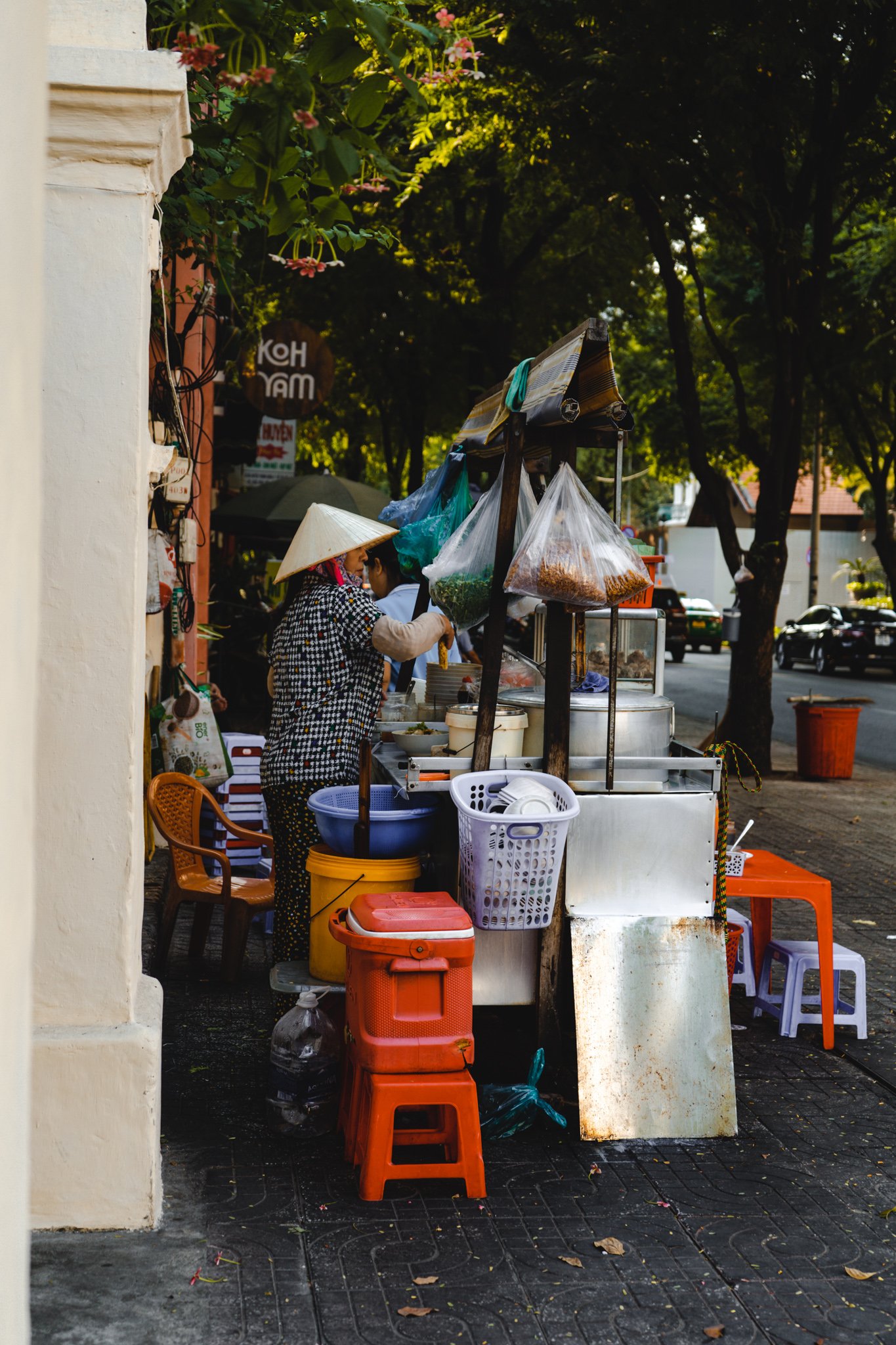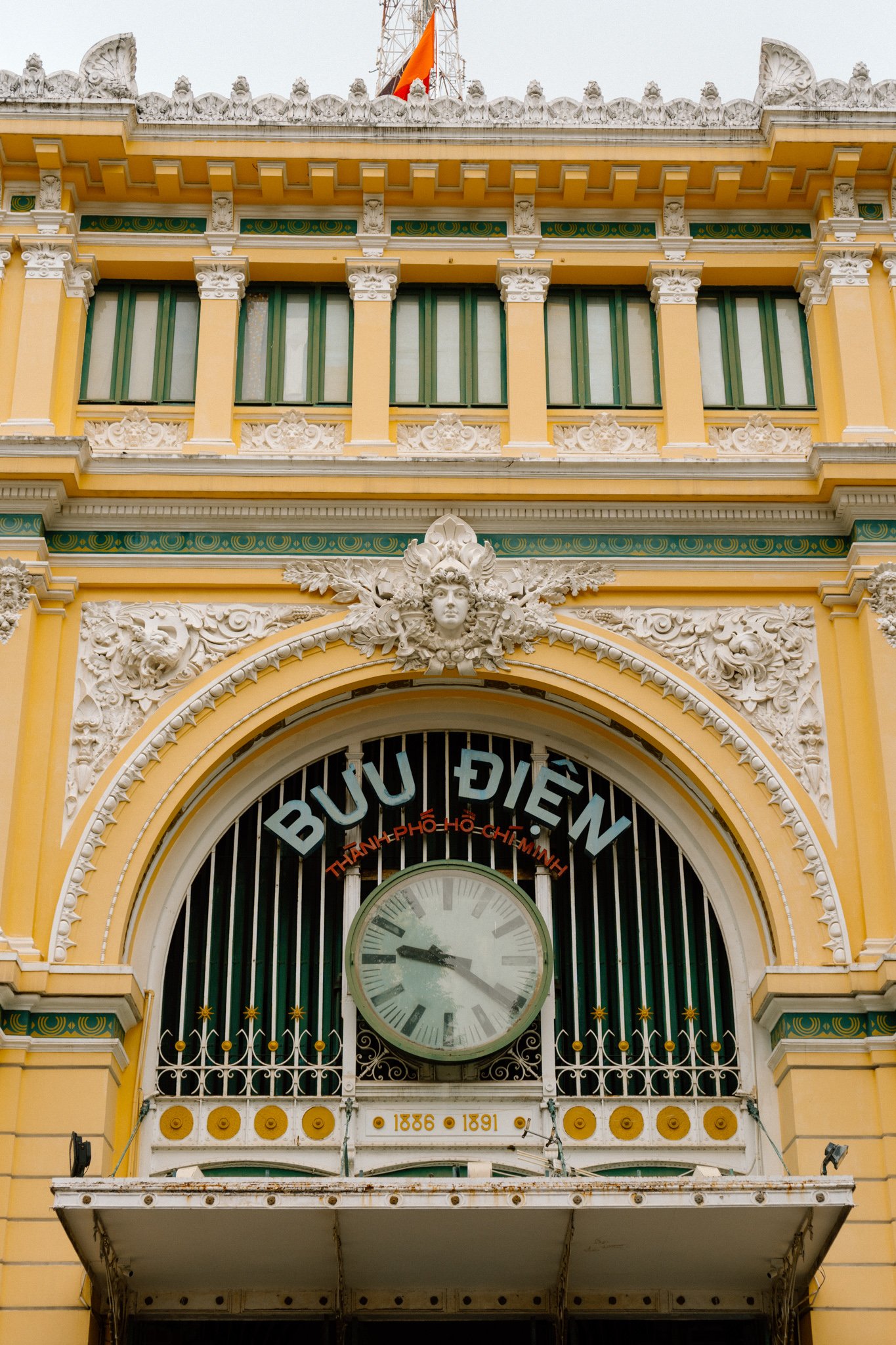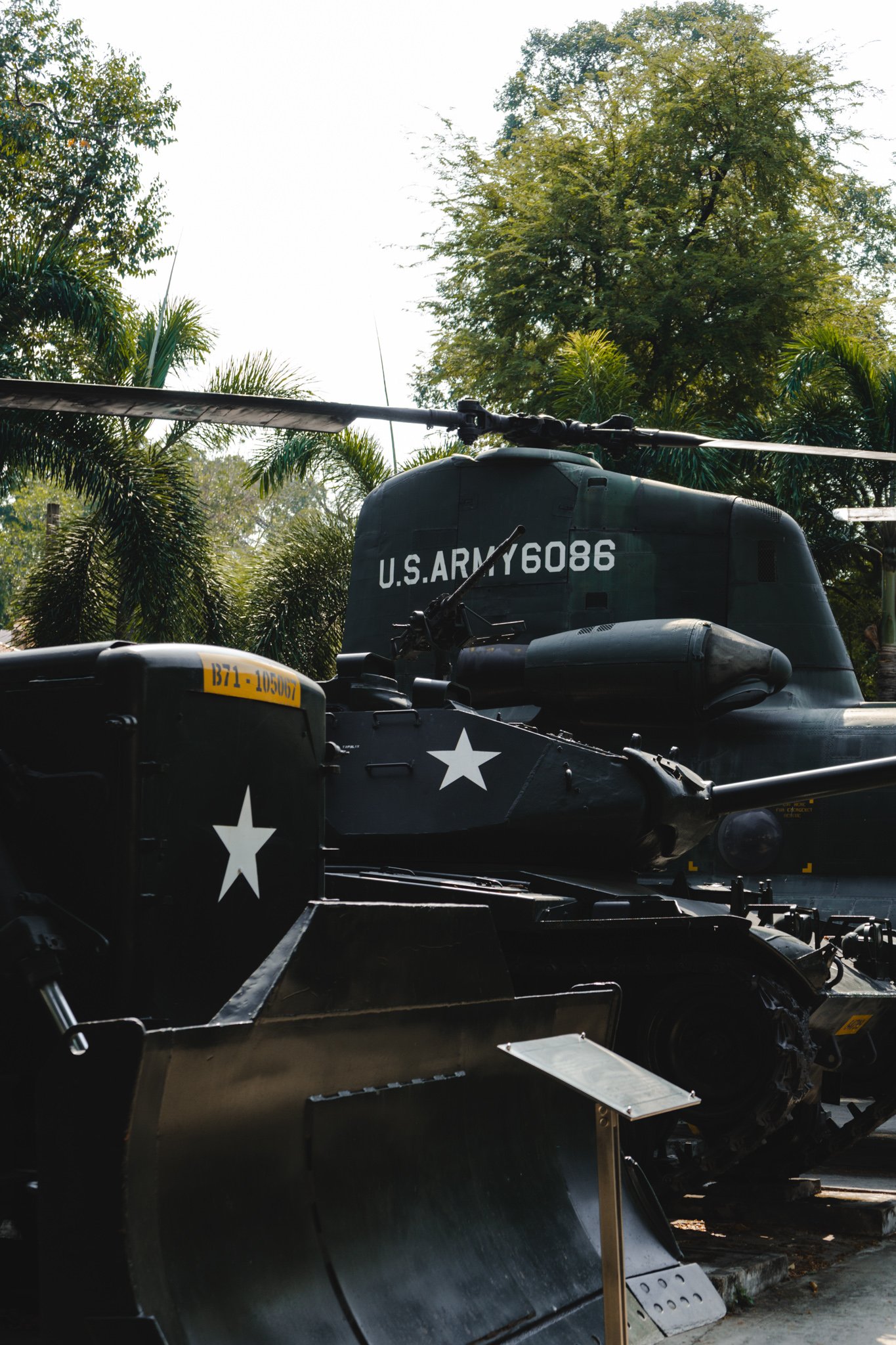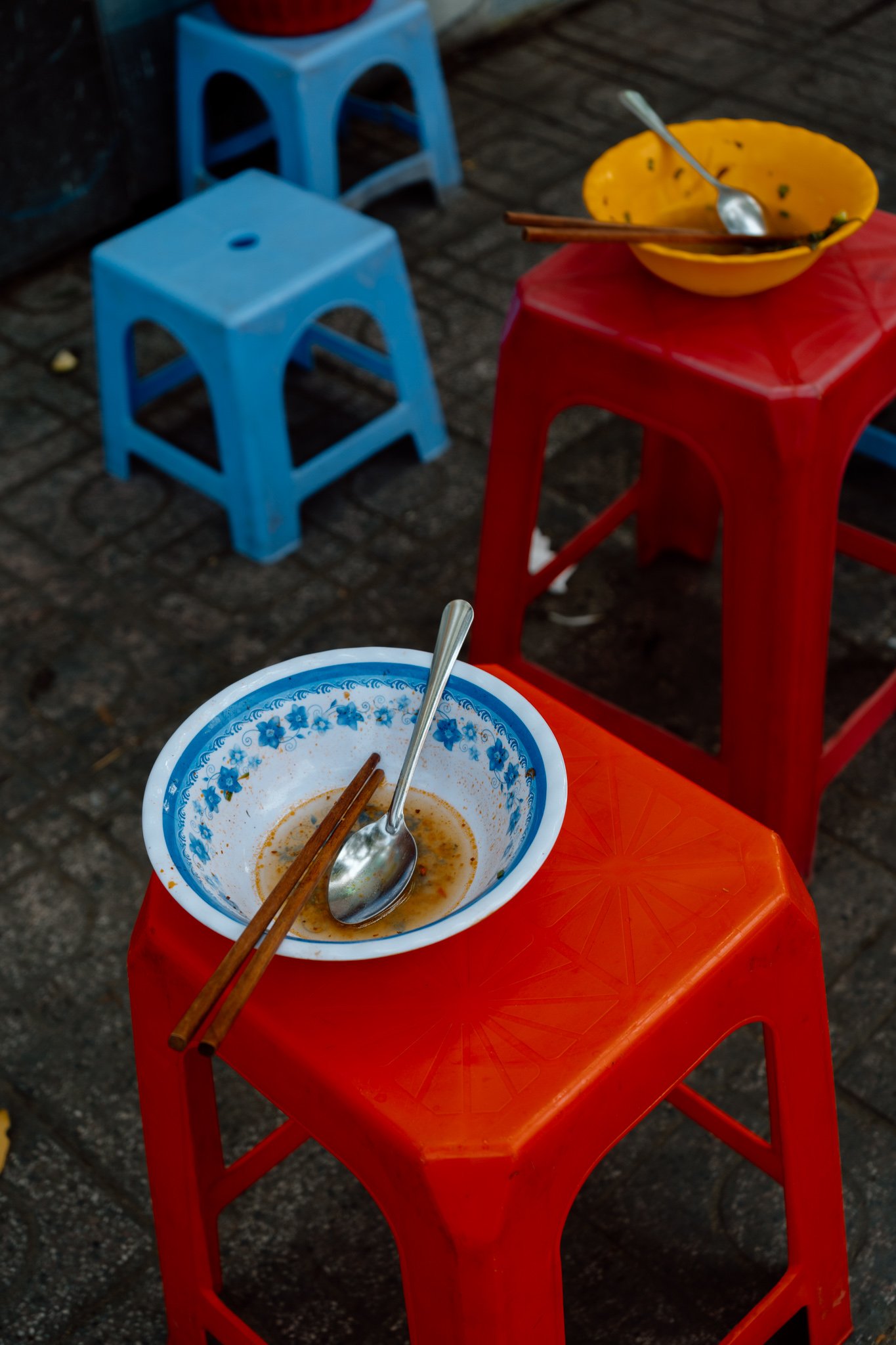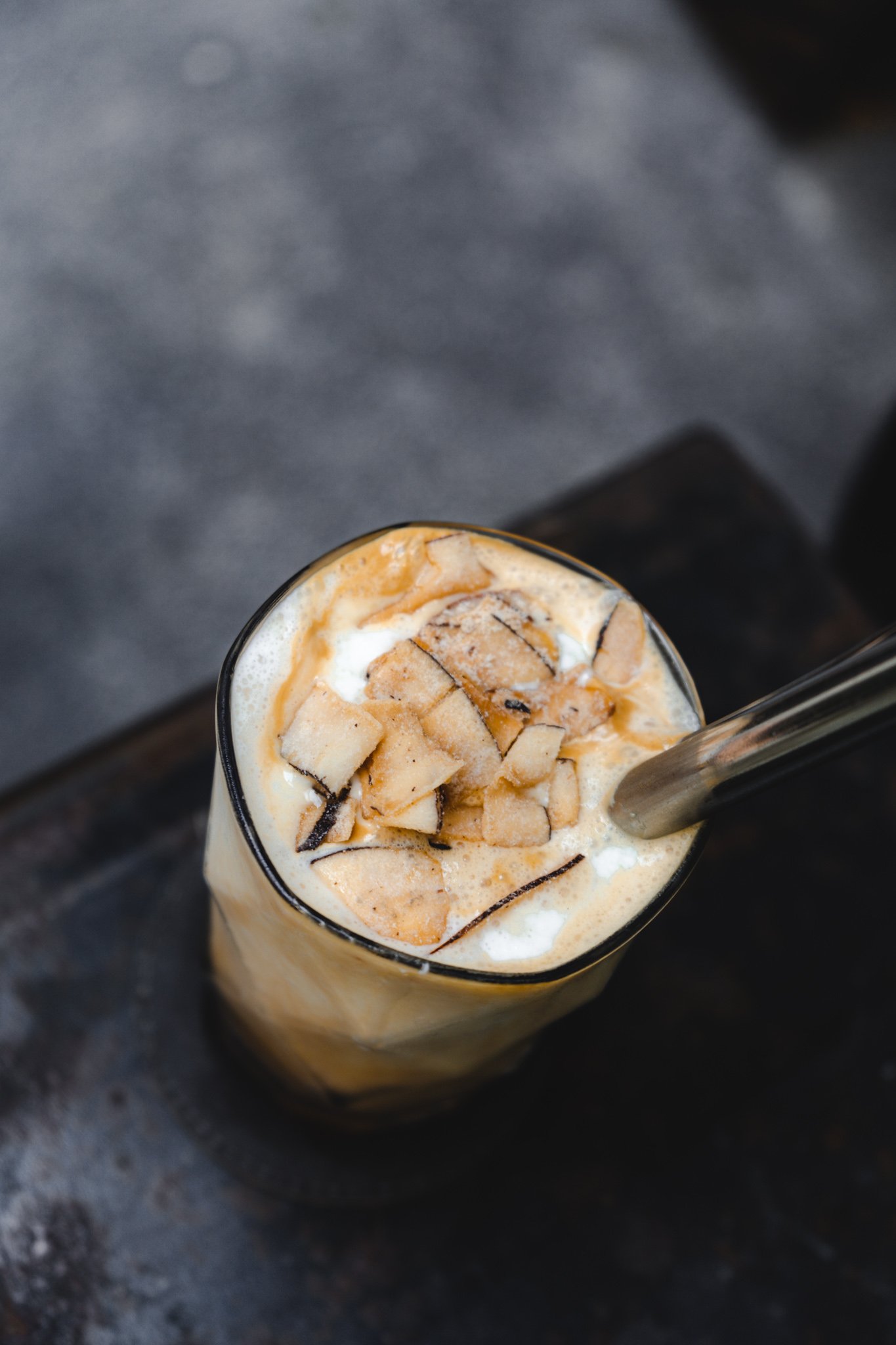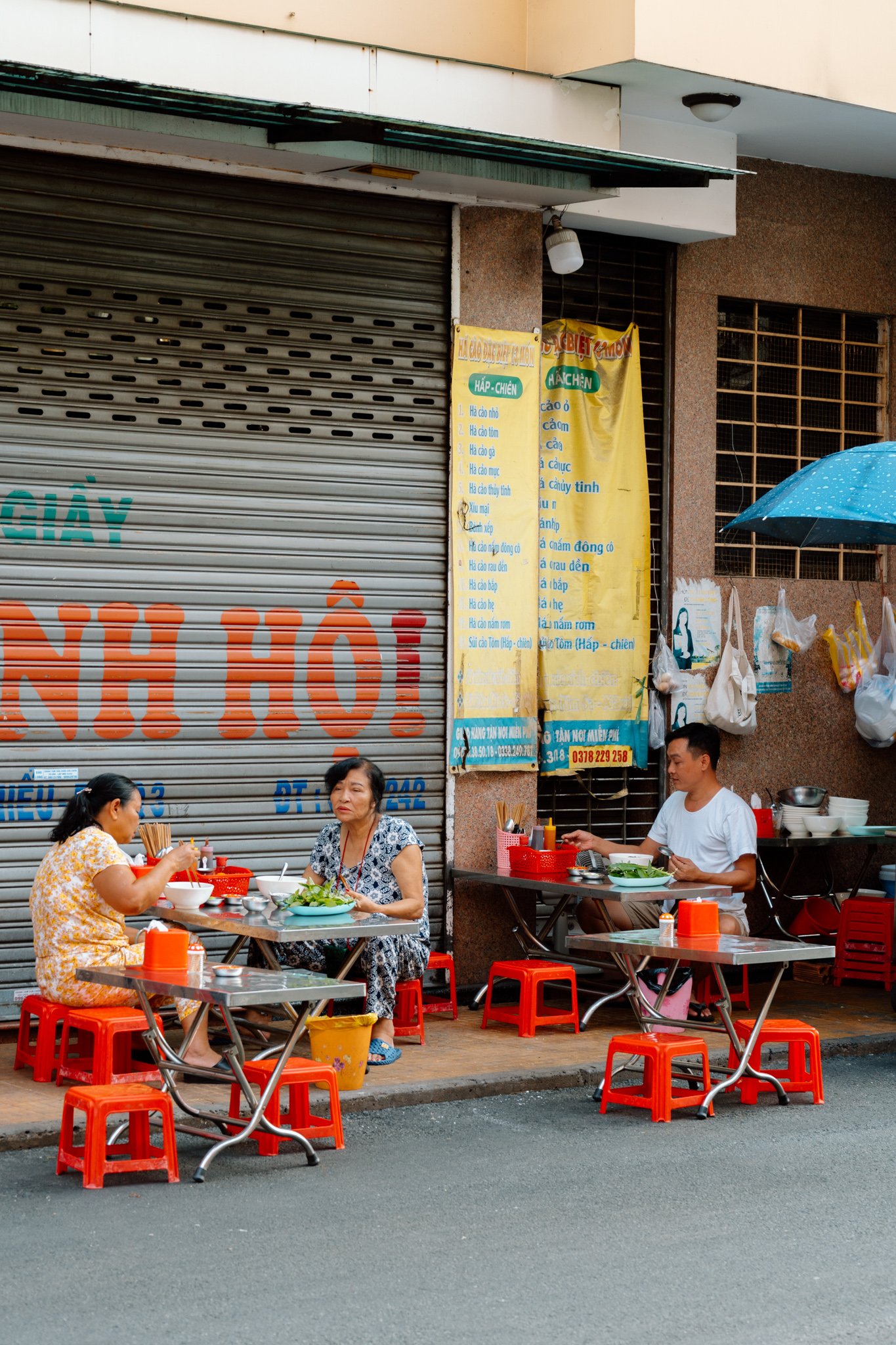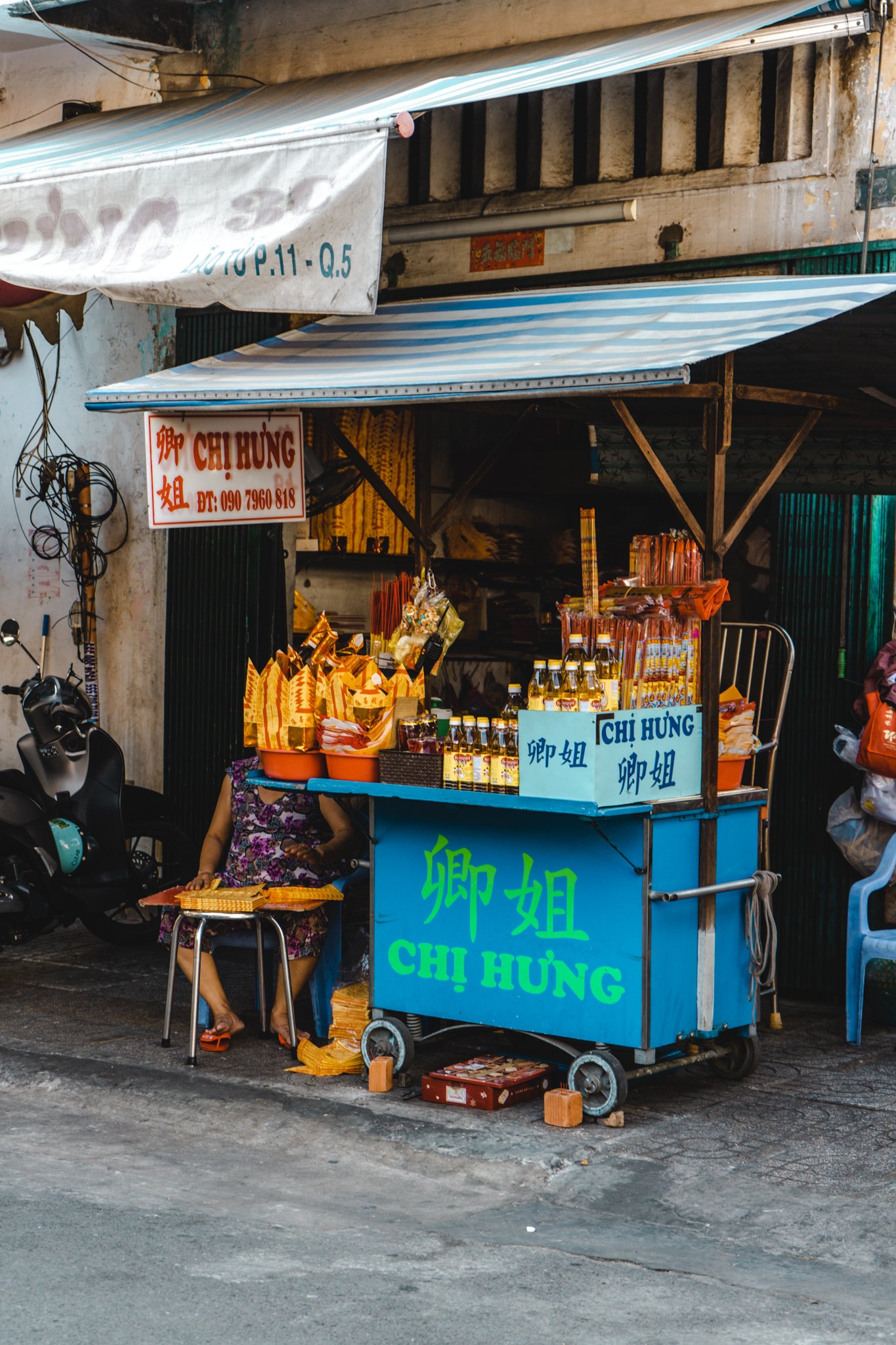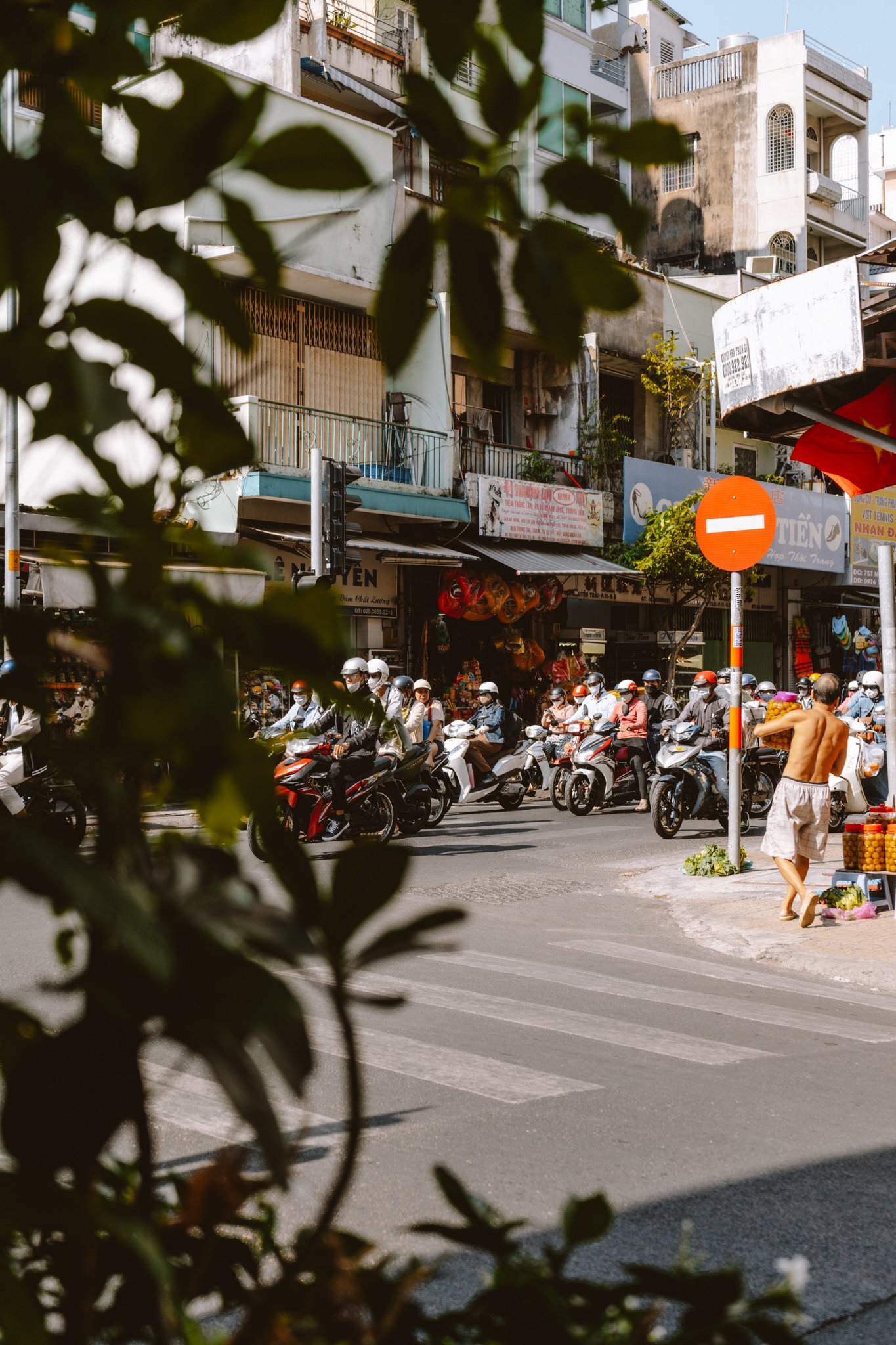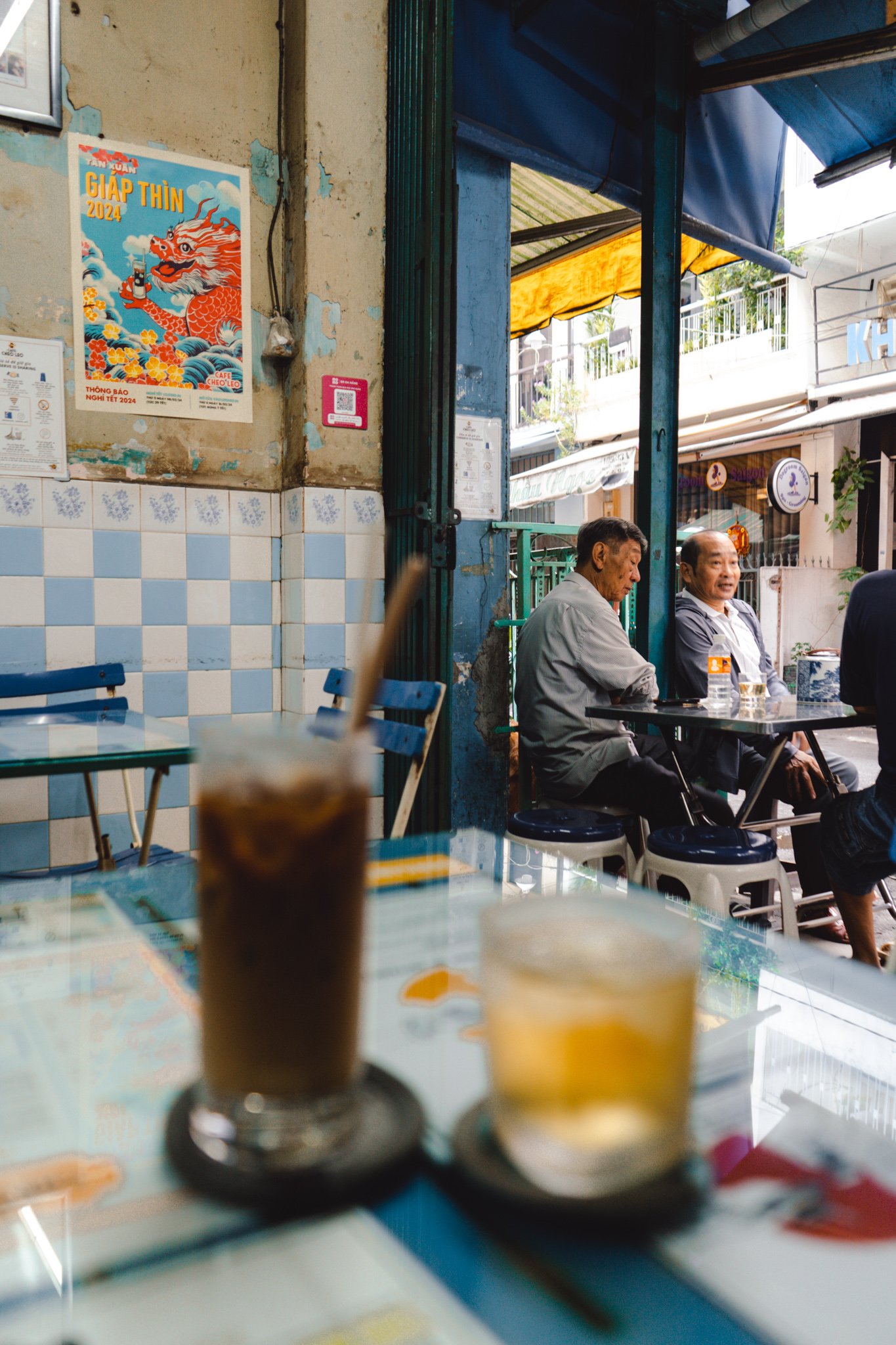Ho Chi Minh Itinerary: 3-4 Days in Saigon For First-Timers
Planning a trip to Ho Chi Minh? This 3-day Ho Chi Minh itinerary includes the city’s main attractions, hidden gems, and insider travel tips. Read on for the most comprehensive guide to Vietnam’s biggest city!
Motorbikes zip across streets lined with people sitting on plastic stools. The air is thick with humidity, and the oppressive heat quickly melts the ice in my cà phê sữa dá (iced dark roast coffee over ice with condensed milk). It would be easy to feel overwhelmed walking around Ho Chi Minh (sometimes referred to as Saigon), but after multiple trips to the city, I’ve fully fallen in love with its southern capital. And that’s why I’ve finally curated a Ho Chi Minh itinerary filled with hidden gems, delicious street food, impeccable coffee, and cultural attractions.
As someone who has traveled through Vietnam extensively, you can trust me when I tell you this ultimate Ho Chi Minh itinerary will help you plan the perfect trip to HCMC and introduce you to Vietnam travel.
Ho Chi Minh or Saigon ↴
Before I get into the nitty-gritty of this itinerary, I feel like I have to address the two-name debacle. The city’s airport code is “SGN”, but signs welcome you to “Ho Chi Minh City”, and it can culminate in confusion, especially for first-time visitors. So which name is correct?
The official name for Vietnam’s largest city is Ho Chi Minh City (often abbreviated as HCMC). However, the city was called Saigon up until 1975 when it was renamed Ho Chí Minh, after the Vietnamese communist revolutionary, nationalist, and politician. Ho Chi Minh City is the most correct, but if you happen to call it Saigon, most people will understand.
travel tips for Vietnam ↴
SIM cards
I paid USD $10 for a Viettel tourist SIM card at the airport kiosk near the international terminal’s baggage claim. The SIM card was good for 2 weeks, and I had 5G in most places around the city. There is another Viettel kiosk near the taxi stands when you exit customs in case you miss the first one. E-SIM cards are a great alternative, especially if you like to hit the ground running.
get out early
You may not be a morning person, but trust me when I tell you that an early start is going to make your explorations much more enjoyable. The middle of the day gets incredibly hot, and it can be a miserable time of day to be out and about.
currency
The official currency in Vietnam is the Vietnamese Dồng (VND). Cash is still king in most of Vietnam, but on my most recent trip to Ho Chi Minh, I found that card payments are widely accepted. You’ll need local bills if you plan on visiting markets and eating street food from roadside vendors.
Best Time to Visit Ho Chi Minh City ↴
Ho Chi Minh City has two distinct seasons: wet/monsoon and dry. Dry season stretches from December to April. Temperatures in HCMC during the dry season are regularly 100°F.
If you're planning to visit during Tet, the Vietnamese New Year, be prepared for potential disruptions to your travel itinerary due to holiday festivities. Hotels and hostels are typically booked well in advance and prices surge. Many museums, shops, and restaurants modify their operating hours or shut down temporarily. Popular attractions experience even heftier crowds than usual. While Tet is a magnificent cultural experience, I don’t think I’d recommend first-timers visiting during the holiday, particularly in bustling cities like Ho Chi Minh, where the crowds can be overwhelming.
how to get to Ho Chi Minh City ↴
International travelers arriving via plane can fly into Ho Chi Minh International Airport (Tan Son Nhat). The airport is approximately 30 minutes outside the city center (District 1), however, it often takes longer due to congested traffic.
The best way to get into the city from the airport is by bus, taxi, or Grab (a rideshare app similar to Uber). Taxis are more expensive than the other two options, and ultimately they aren’t any faster than booking a Grab. To book a Grab, you will need to download the Grab app and have access to WiFi or a working SIM/e-SIM.
You can also take a public bus from the airport to Ho Chi Minh. There are three bus options to my knowledge that will take you into the city center: #109 (yellow bus), #49 (airport bus), and #52 (public bus).
Getting Around Ho Chi Minh City ↴
When it comes to getting around Ho Chi Minh City, there are several options for travelers. The city center, where many of the main points of interest are located, is relatively walkable. I often recommend walking as an introduction to any new city. I find walking is the best way to gain a sense of your surroundings and it’s always how I stumble upon hidden gems. However, the heat and the traffic in HCMC can make walking less than pleasant. Keep this in mind when considering how to best explore.
If you want to explore HCMC in greater depth or are following this recommended itinerary, you’ll need Grab, a rideshare app that is free to download. Rides are affordable and safe. You can pick whether you take a car or a motorbike Grab. Traditional taxi drivers sometimes scam tourists, and Grab makes it less likely you’ll get ripped off.
If you’d rather use a traditional taxi cab, I recommend downloading Grab and using the fare listed on the app to negotiate. Alternatively, if the taxi cab has a meter, make sure it’s running throughout your journey!
Ho Chi Minh Itinerary ↴
Below is a detailed Ho Chi Minh itinerary which includes all the details you need to know to plan your perfect trip.
Day 1: Tan Dinh Church (pink church), Ngoc Hoang (Jade Emperor Pagoda), “The Lunch Lady”, Thao Dien, ho Chi Minh City Opera House, Ben Tanh Market, Mariamman Hindu Temple, Giac Lam Pagoda, + Bitexco Financial Tower
Hit the streets early! This isn’t always a popular tip, but the heat is less oppressive earlier in the day, which makes exploring the city much more enjoyable. Head to the Cong Caphe location across the street from Tan Dinh Church (Pink Church). Trust me, I’m not promoting the coffee chain. This particular location has a gorgeous photo opportunity of the church on its third floor. The café opens at 7 AM, so you can kickstart your day here before you’re allowed to take photos on the church grounds at 8 AM. The church’s history dates back to French occupation in 1876, making the pink Gothic church nearly 150 years old.
Your next stop is Ngoc Hoang, otherwise known as the Jade Emperor Pagoda. The Jade Emperor Pagoda is a Taoist temple in District 1 that a Chinese migrant founded. You may have seen photos of this temple, as it quickly gained international notoriety when U.S. President Barack Obama visited in 2016.
By this point, you will likely be ready for food. I recommend walking to “The Lunch Lady.” Since 1995, Mrs. Nguyen Thi Thanh, also known as “The Lunch Lady”, has served a rotating menu of noodle soups to locals and tourists alike. Anthony Bourdain featured this lunch haunt on No Reservations, causing it to have a meteoric rise in popularity amongst foreign travelers. Still, the no-frills food spot remains true to its roots with plastic stools and heaping bowls of hot noodles hidden around a busy street corner.
“The Lunch Lady” is not far from Thao Dien, a neighborhood marked by its dense expat population. While it isn’t regarded as a “must-see”, I loved wandering around this part of the city. There are heaps of gorgeous cafés and boutiques to peruse.
Ben Thanh Market is a famous destination for many local and foreign shoppers. The market is open all year round from 6 AM until 6 PM when it transforms into a night market until 10 PM. Ben Thanh Market and its 1,500 vendors welcome an estimated 10,000 visitors per day. Most people visit for the luxury good dupes. From Christian Dior bags to Rolex watches, you’ll find a knock-off of nearly every high-fashion brand you can think of being sold for a fraction of the price. Ben Tanh Market also sells souvenirs, but there are more exciting options at boutiques elsewhere in the city. More than anything, I like to wander Ben Tanh for the buzzing market experience.
For travelers interested in colorful cultural landmarks, I recommend walking from the market to Mariamman Hindu temple. This spiritual site is dedicated to Mariamman, the Hindu goddess of weather. Many Hindu people also pray to Mariamman concerning matters of fertility. The temple was closed when I visited, but the ornate entrance was worth strolling past.
Next, wander past Giam Lam Pagoda, one of the oldest Buddhist pagodas in HCMC. Adorned with intricate architectural details, the pagoda is a true reflection of Vietnam’s profound cultural and spiritual traditions. You can visit the inside of the pagoda, where incense wafts in the air. The pagoda's main hall houses a remarkable collection of statues and artifacts, including a magnificent Amitabha Buddha statue dating back to 1900.
Cap off your inaugural day in HCMC by watching the sunset over the city at Bitexco Financial Tower. The skyscraper towers above Ho Chi Minh, offering views from its observation deck of the sprawling city below. upon its completion in 2010, it was the tallest building in Vietnam. However, it lost its title in January 2011 with the opening of the Landmark Tower in Hanoi.
Day 2: OKKIO, War Remnants Museum, Independence Palace, Tao Dan Park, Propaganda Bistro, Notre Dame Cathedral of Saigon, Saigon Central Post Office, People’s Committee of Ho Chi Minh City, + The Café Apartments
The second day of your Ho Chi Minh Itinerary is full of sightseeing and bucket-list landmarks! Grab a coffee at OKKIO in the morning. This lovely hidden gem was a friend’s recommendation and it delivered tenfold. As I walked along a busy street, looking for the street number, I came upon the narrow doorway leading to a poorly lit spiral staircase. The reward for climbing up the three flights of stairs was this gorgeous café and its views.
From OKKIO, walk to the War Remnants Museum. This is easily one of the most moving museums I’ve ever visited. The museum spans multiple floors and gives remarkable insight into the “Vietnam War” and its impact on the subsequent generations. Every exhibit is impeccably curated, but the Agent Orange installation was especially educational. Please note: graphic images and weapons are displayed throughout the museum.
Spend 1-2 hours learning about the “Vietnam War” entry is 40,000 VND. The museum is open daily from 7.30 AM until 5.30 PM. Walk to the Oh Quao concept store for unique souvenirs or stop by the Cocoa Project for beautifully branded (and locally produced) chocolate bars.
It’s a short walk from the War Remnants Museum to Independence Palace, the former home of the President of South Vietnam during the war. Today, it is a museum that documents life during this tragic conflict. You can take a free guided tour of the many ornate corridors of the palace, as well as its adjoining government offices. The palace also has a network of underground tunnels and basement bunkers which were previously used for entering and exiting the palace undetected. Independence Palace is open daily from 8 AM until 3.30 PM. Entry costs 65,000 VND.
Hungry? Head towards Propaganda Bistro for lunch. Propaganda has a fantastic atmosphere to match its fantastic menu offerings.
Around the corner from Propaganda are your next stops of the day: Notre Dame Cathedral and the Saigon Central Post Office. The cathedral and the post office have both become symbols of Ho Chi Minh due to their unique architectural styles. Notre Dame was built between 1877 and 1883. The red bricks used in its construction were imported from Paris. Inside you’ll find colorful stained glass windows and European marble statues. It feels both out of place and a reminder of Vietnam’s colonial history.
Walk across the road to the Saigon Central Post Office. If you happened to pick up a postcard at the Oh Quao concept store earlier in the day or at Ben Tanh Market on day one in Ho Chi Minh, now is the time to send it! The Saigon Central Post Office was famously designed by Gustave Eiffel, the same architect who designed the Eiffel Tower. It is one of HCMC’s oldest buildings but remains fully functional.
You can walk from the Saigon Central Post Office to your next stop on this itinerary: The People’s Committee of Ho Chi Minh City, also known as Ho Chi Minh City Hall. The building was constructed between 1902 and 1908 by a French architect. In 2023, the building was opened to the public for the first time. The halls’ yellow color and French colonial architecture make it a popular photo backdrop for tourists. Snap a photo of your own before taking a stroll along Nguyen Hue.
Nguyen Hue is known as the city’s “walking street.” The street is nearly 1/2 mile long and leads you to the next itinerary bullet point: the Apartment Café Building. You’ve undoubtedly seen the Apartment Cafés on Instagram. This nine-story tower is filled with cafés (as its name suggests), boutique shops, speakeasy bars, and intimate eateries. This is a great place for dinner, especially since most of its restaurants have balcony views of the city.
Day 3: Cheo Leo, Chợ Lớn, Museum of Traditional Vietnamese Medicine, + Ben Nghe Street Food Market
Your third day in Ho Chi Minh starts with coffee at Cheo Leo, the city’s oldest café. This local haunt is indicative of classic Vietnamese coffee culture. Here, folding chairs fill the small space inside a derelict building. In the kitchen, coffee is made over the same coal fire that has always been used. The owner moves the boiling coffee around the coal intuitively. There’s no food here, but what they do (coffee), they do to perfection.
From the café, you can either walk or get a Grab to Chợ Lớn (Chinatown). This is the largest Chinatown in Vietnam. The area began as a settlement of Chinese traders who migrated in the 18th century. The Chinese immigrants brought their traditions with them which, in turn, created a distinct cultural enclave. Over time, Chợ Lớn developed into a thriving neighborhood filled with Chinese markets, cuisine, and temples.
While you’re in Chợ Lớn, I recommend visiting:
Lady Thien Hau Pagoda | a vibrant temple painted with deep red and bright yellows dedicated to the goddess Thien Hau, the protector of sailors and fishermen
Quan Am Pagoda | a hidden gem temple dedicated to the Goddess of Mercy, featuring a beautiful roof that depicts characters from Chinese folklore
Nhi Phu Temple (Ong Bon Pagoda) | one of the oldest Chinese pagodas in HCMC
Hao Si Phuong Alley | a century-old alley predominantly inhabited by people of Chinese descent known for its brightly painted houses, originally constructed as multi-story apartments
Chinese medicine pharmacies | traditional Chinese pharmacies filled with herbal remedies and medicinal products
Chợ Lớn Mosque | a mosque constructed in 1932 by the Vietnamese Tamil Muslims that predominantly caters to Malaysian and Indonesian Muslims residing in Ho Chi Minh City
Walk or hail a Grab from Chợ Lớn to your next stop on this itinerary: the Museum of Traditional Vietnamese Medicine. The museum spans five floors and is chalked full of exhibits providing insight into traditional Vietnamese medicinal practices. At the end of your self-guided museum explorations, you are treated to hot tea in the gift shop where you can purchase Vietnamese remedies to take home.
Ben Nghe Street Food Market is a trendy food hall that makes a great spot for dinner!
day 4: Day trip to Cu Chi Tunnels + Binh Quoi Village
On the fourth day in Ho Chi Minh, visit the Cu Chi Tunnels. Travelers can book half or full-day trip tours of the tunnels. If you’re up for filling your day to the brim, spend the afternoon or evening at Binh Quoi Village.
where to stay in Ho Chi Minh City ↴
Ho Chi Minh is a sprawling city, making your hotel or hostel location an impactful part of your overall experience. I recommend first-time visitors stay in either District 1 (D1) or District 3 (D3). There are plenty of affordable hotels and clean hostels in both D1 and D3.
best areas to stay in Ho Chi Minh City
Thao Dien | This is expat central! If you’re visiting HCMC for an extended period or are a solo traveler looking to socialize, this is the area to stay in.
District 1 | Staying in District 1 keeps you close to the city’s main attractions. I recommend staying here on your first visit to Ho Chi Minh.
District 3 | District 3 borders District 1, the city center encompassing many main landmarks. District 3 also houses several tourist attractions.
best hotels in Ho Chi Minh City
Wink Hotel | My recent stay at the Wink Hotel Saigon Center was incredible value for money. Beyond the breakfast buffet, the gym, and the remarkable location (so close to everything!!!), was the 24-hour stay policy. Essentially, if you check into the Wink at 10 PM and notify the staff beforehand, you don’t have to check out until 10 PM the following night. This allows you to enjoy your stay for the duration.
La Siesta Premium Sai Gon | La Siesta has amazing amenities at an affordable price tag. The hotel has an infinity pool, a Sky Bar, and two restaurants.
Myst Dong Khoi | A stay at the Myst Dong Khoi epitomizes luxury in HCMC.
We love using Booking.com to book the best places to stay around the world.
where to eat in Ho Chi Minh City ↴
You can read my detailed coffee guide if you want a comprehensive run down of my favorite cafés in Ho Chi Minh City. Don’t have time for an in-depth read? Check out my outline of must-try foods and can’t-miss restaurants below.
must-try Vietnamese foods
Phở | Perhaps the most iconic of Vietnamese dishes is phở, commonly referred to as noodle soup.
Bánh Mì | Another classic Vietnamese dish is bánh mì, a sandwich made by filling a short baguette with a crisp crust and soft inside with meat (typically pork), cilantro (coriander), and pickled vegetables. The baguette is split lengthwise, like a sub-sandwich.
Bánh Xèo | This dish is extremely popular in south and central Vietnam. A thin pancake is made with rice flour, turmeric, and coconut milk and fried until crispy. Traditionally, it’s filled with pork, shrimp, bean sprouts, and coriander before being folded in half like a crepe.
Cao Lầu | Originating in Hoi An, this noodle dish features slices of barbecued pork in broth. The dish is topped with fresh herbs and pork cracklings.
best places to eat local food in Ho Chi Minh
“The Lunch Lady” | A local favorite catapulted into popularity by the late famous foodie, Anthony Bourdain. The menu rotates a number of noodle soup variations that are served steamy in bowls big enough to swim in.
Propaganda Bistro | Mango sticky rice, spring rolls, and citrus tofu rice are just a few of the delicious dishes you will find on the menu at Propaganda. The small bistro is located around the corner from the Saigon Central Post Office and other District 1 landmarks.
best places for vegetarians + vegans to eat in Ho Chi Minh
Bami | Looking for a plant-based bánh mì? Bami is the perfect place for vegetarians to try a meat-free version of the Vietnamese staple.
Zeroism | A fully plant-based restaurant serving platters of vegan food in a sleek, industrial space. Their spring rolls were crisp on the outside and stuffed with fresh vegetables on the inside, but it was the sourdough pizzas that really put my tastebuds in a tizzy.
Bep Vo Kitchen | A vegetarian-friendly spot with indoor and outdoor seating in the heart of Thao Dien.
Kashew Cheese Deli | My fellow blogger and a long-time Vietnam expat, Frances of So The Adventure Begins, suggested we meet up at this 100% vegan spot for lunch. Kashew’s menu was so delicious, that I went back multiple times after our initial friend date. I loved the “La Vita Bella Pesto Panini” accompanied by kombucha. I also highly rate the “Avocado Kream Cheese Rye Toast.”
Soma Saigon (The Green Box) | A favorite spot for co-working amongst Thao Dien-living expats, Soma has beautiful outdoor seating and a menu full of healthy, fresh food.
Read more → Best Vegetarian Restaurants in Ho Chi Minh (coming soon)
best coffee spots in Ho Chi Minh
OKKIO | This beautiful hidden gem was recommended to me by my friend and fellow travel blogger, Millette of The Next Somewhere. Down a narrow passage and up a spiral staircase lies Okkio, a
Cheo Leo Café | Cheo Leo is famed for being the first café in HCMC.
The Ghe Coffee | This hidden gem is located down a narrow alley, up three flights of stairs. It makes my list of best cafés in HCMC thanks to its prime location in District 1 and its signature ice cube coffee. Dark roast coffee is frozen into ice cubes that slowly melt in your glass of condensed milk. It reminded me of the ice cube coffee I had in Hoi An.
Read more → 17 Best Cafés in Ho Chi Minh City: A Coffee + Brunch Guide to Saigon
where to go after Ho Chi Minh ↴
Vietnam is one of my favorite countries in the world for good reason: it’s incredibly diverse, easy to travel, and has something to offer everyone. For many, Ho Chi Minh is an introduction to the country, serving as a jumping-off point for travelers. From Ho Chi Minh, I suggest traveling north through Hoi An and Hanoi as a bare minimum.
map ↴
Find everything you need for the perfect 3-4 itinerary for Ho Chi Minh on the map below.
